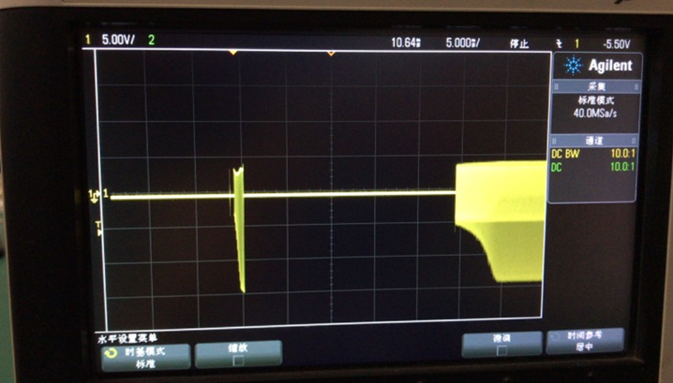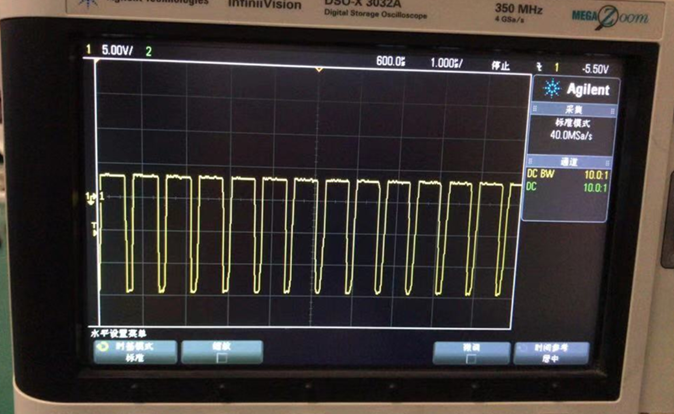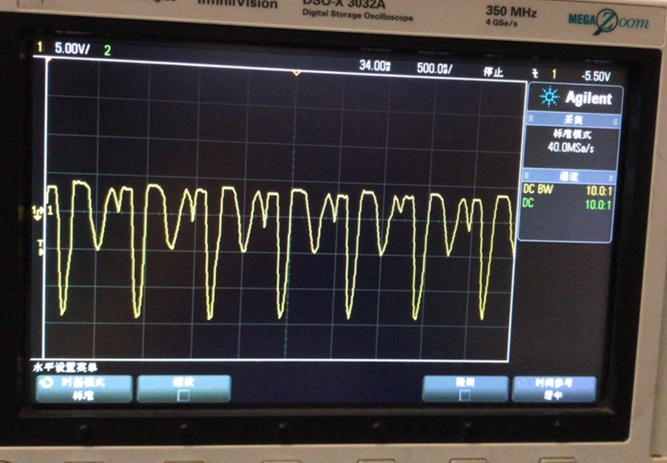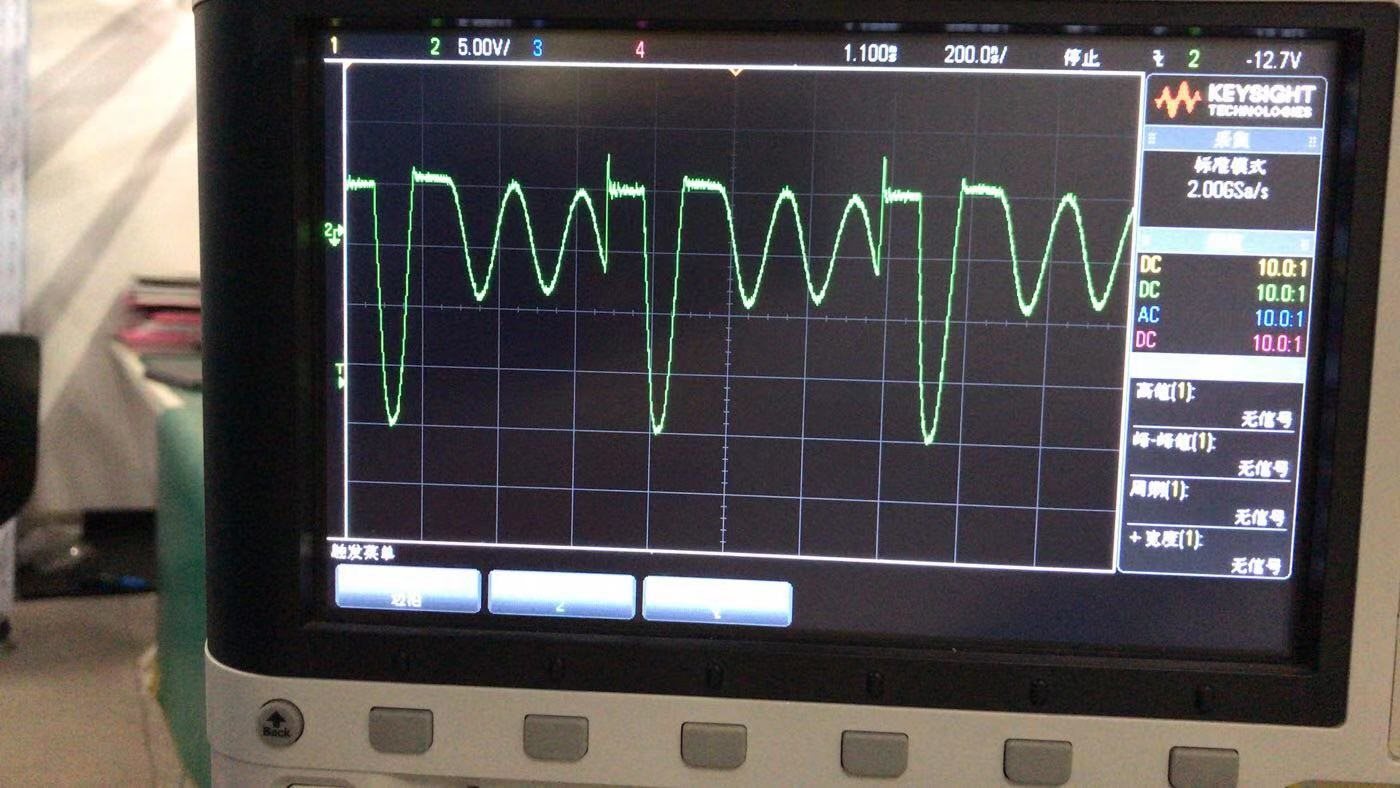Hi expert,
Here is a technical support need of TPS65131 from customer: The negative output of TPS65131 is not correct. Customer set negative output to -13.3V, but the actual output is -14.1V.
Below is waveform of OUTN pin. As you can see, during the first soft start, it shutdown, and then soft start again after 24ms.
It seems normal during the first soft start from below figure.
But it seems unstable waveform during the second soft start, and the final output is not correct.
I reviewed customer’s schematic, and recommend them to change C248(feedforward capacitor) to 7.5pF, also add a 51.1K resistor in series with C248,but it still can’t work correctly.
The unstable waveform during the second soft start change to like this:
Could you please give some suggestions to this situation? Many Thanks!






